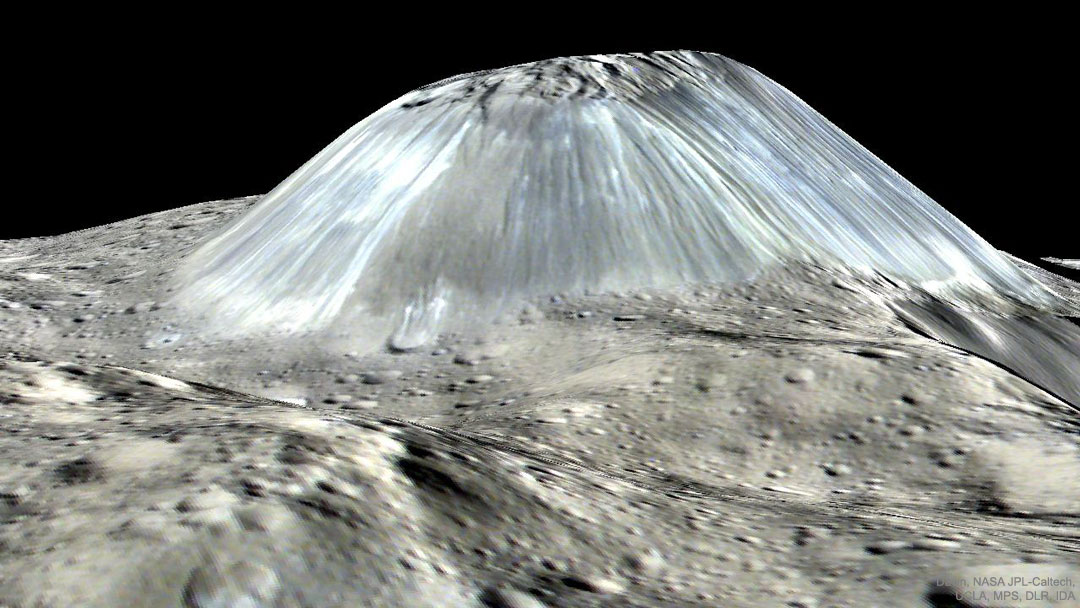"The mantle of the Earth is made mostly of a mineral called olivine, and the assumption is usually that all planets are like the Earth," said Jay Melosh, Distinguished Professor of Earth, Atmospheric and Planetary Sciences at Purdue University, who led the study. "But when we look at the spectral signature of rocks exposed deep below the moon's surface, we don't see olivine; we see orthopyroxene."
Around 4 billion years ago, an asteroid collided with the moon and created the largest and deepest impact on the moon: the South Pole-Aitken basin. The collision exposed lunar mantle in the basin and splashed up material onto the far side of the moon.
Discovered in images from the Context Camera, this region exhibits dark material that is being eroded from dark layers in the bedrock of a semicircular depression near the boundary of the Southern highlands and the Northern lowlands. Downslope lineations support the notion that these dark sediments are derived locally, and did not accumulate here by coincidence because of the winds.
Sand grains can also roll along the ground as they are blown by the wind, and they are also jostled by other sand gains that are similarly flying across the surface. All of these repeated impacts tend to wear down the sand grains, smoothing them into a more spherical shape and breaking off small fragments that supply the vast dust deposits of Mars. This process (known as comminution) ultimately destroys sand grains and limits the length of time that the particles exist. The fact that we see active sand dunes on Mars today requires that sand particles must be resupplied to replace the grains that are lost over time. Where are the modern day sources of sand on Mars?
Best Way to Recognize Emotions in Others: Listen
Across all five experiments, individuals who only listened without observing were able, on average, to identify more accurately the emotions being experienced by others. The one exception was when subjects listened to the computerized voices, which resulted in the worst accuracy of all.
Jupiter and Two of Its Biggest Moons
Io and Europa are two of Jupiter's four Galilean moons, which are so named because famed Italian astronomer Galileo Galilei discovered them back in 1610. (The other two Galilean satellites are Callisto and Ganymede.) Io is the most volcanic object in the solar system, and astrobiologists regard the ocean-harboring Europa as one of the best bets to host life beyond Earth.





No comments:
Post a Comment